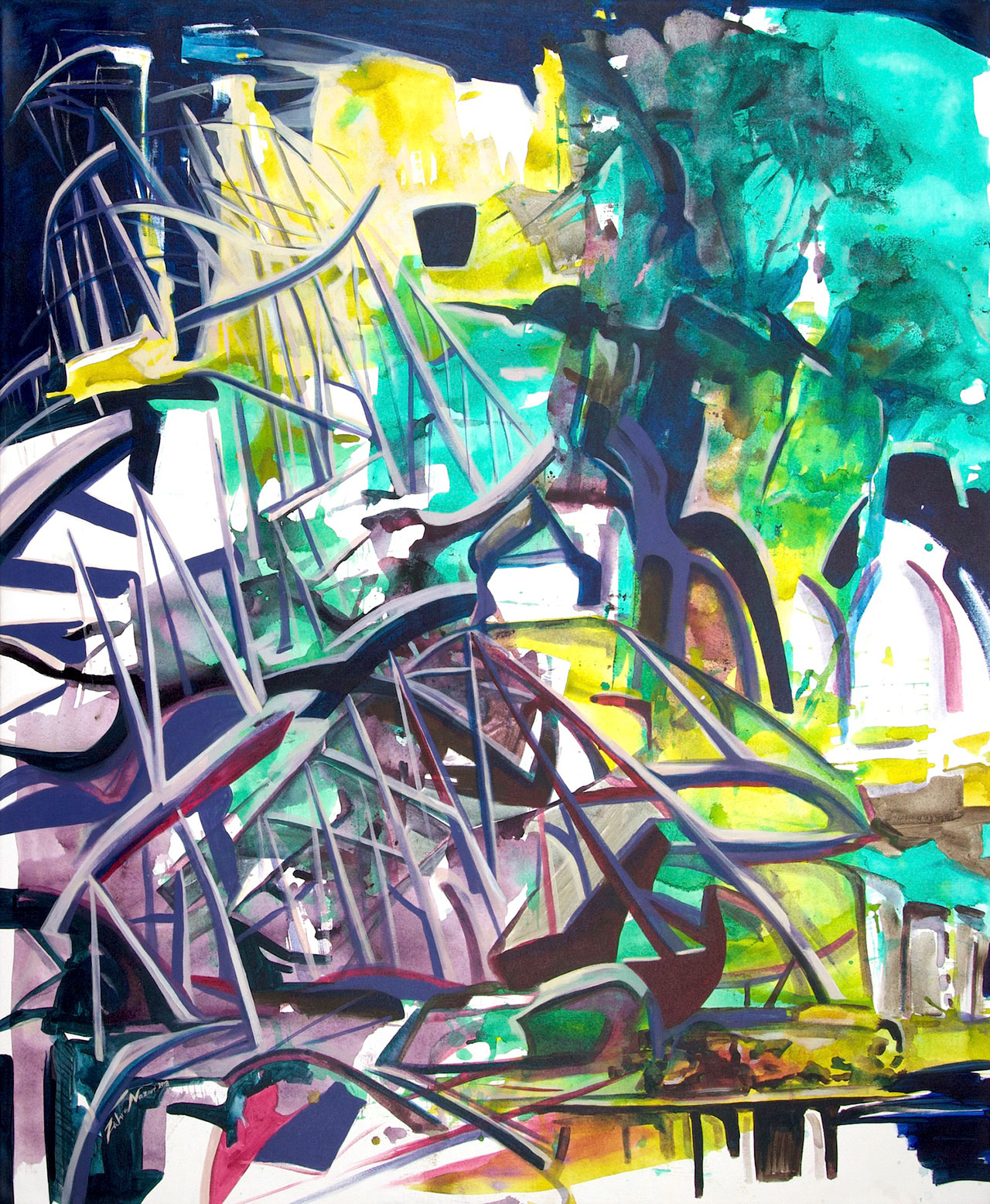- Apply
- Visit
- Request Info
- Give
Published on July 13, 2021
Zahra Nazari
"Working from both photographs and memory, while allowing for improvisation and invention, Nazari rarely renders whole buildings in her paintings. Instead, she paints excerpts especially significant for her—a section of ceiling with its elaborate details, a particular sequence of windows or vaults, floral patterning, part of a wall—which she combines with abstract gestures and shapes, other forms resembling jumbled architectural fragments, and intermingling colors.Architecture is never static in these works, but instead unstable, changeable, often vertiginous, and under duress (the Ali Qapu Palace, incidentally, ravaged by environmental and political forces, was at one point a ransacked ruin). Construction and deconstruction share close quarters in Nazari’s work.
Many of Nazari’s abstract forms, or what Western viewers might normally think of as abstract forms, including prominent angles, jutting bands, arcs, cross-hatching, rudimentary geometric shapes, and irregular color blocks, derive more from Persian architecture than Western abstract painting. Domes, vaults, honeycombed muqarnas, arabesques, eight-pointed stars, latices, and minarets—all of these, however, transformed, are recurring motifs.Also fascinating to note is that the colors in Nazari’s distinctive palate, including various purples, soft reds, golds, tawny browns, oranges, and rich blues, are especially important and meaningful in Persian architecture, and have been for centuries.
Nazari often combines multiple views of the same building, or a portion of that building, in a single painting, in a way that scrambles and shifts the viewer’s perspective; very often one is not at all sure whether one is looking up or down, at something distant or close—visual manifestations of cultural and personal disorientation. In Nazari’s Sheikh Lotfallah Mosque (2020), you look at this structure, or portions of it, from afar, but simultaneously from within it; at parts of its façade from a distance but also from inside at sections of its interior ceiling(s).With rich blue, gold, red, and purple tones, this vivid, composite scene is also curiously vaporous, like a slippery memory or a receding dream—an effect augmented by how Nazari has left large portions of the painting bright white."
Gregory Volk, catalog essay forUnification,Zahra Nazari solo exhibition at High Line Nine Gallery, NYC, 2021.


